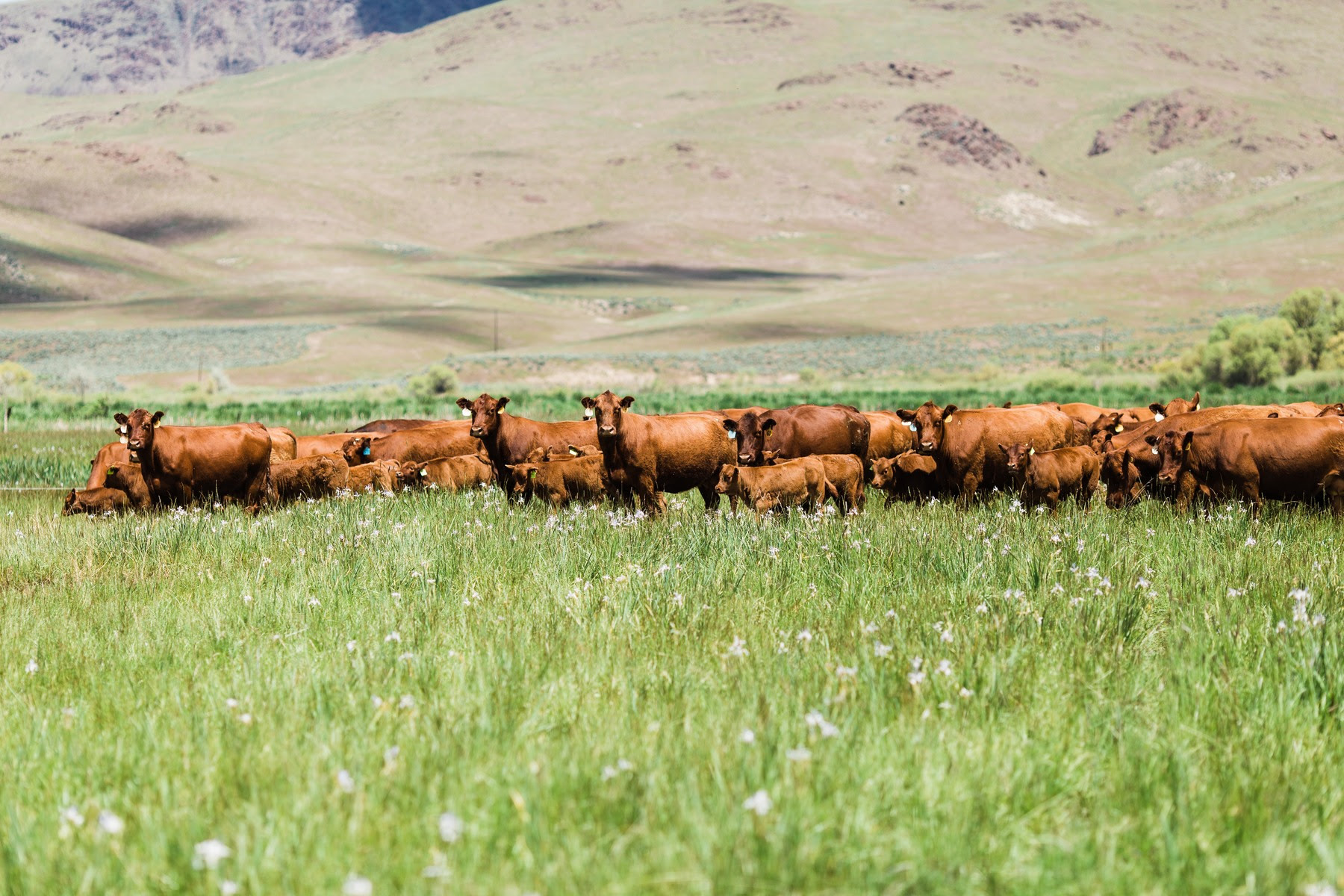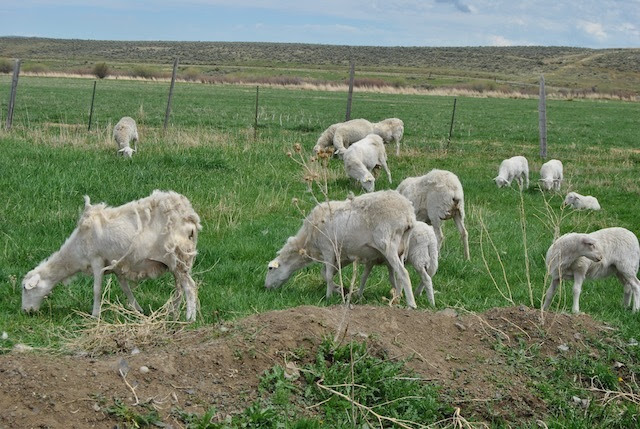How Do Our Animals Handle the Heat?
posted on
August 2, 2020
I hope you are all staying cool this week! I know it's not easy! Sometimes we get asked: "How do your animals stay cool during these hot summer days?"
They can't just jump into the pool when the temperature gets too hot. (though it sure looks like the pigs can! Keep reading below)

Every animal we have here on the ranch is different and has different needs for staying cool.
Cattle:
We have very little natural shade here on the ranch due to the lack of trees. This means that we have needed to select heat-tolerant cattle so they can thrive in our hot and dry climate. One of the reasons we have gone to red Angus cattle is because they are great beef cattle, but red Angus cattle are more heat tolerant. In fact, compared to black Angus cattle, red Angus can be several degrees cooler than black Angus, which means there is less stress on them during the peak of the summer months. They do great out here on the high desert!

Sheep:
Our sheep are also genetically adapted to hot temperatures. On our ranch, we have hair sheep. The biggest difference between hair sheep and traditional wool sheep is that hair sheep shed their "hair" during the late spring and are left with a nice short, slick coat, ready for the summer months.
Hair sheep are originally from Africa and are naturally heat tolerant. The nice part about these sheep is that they have adapted to our changing climate and grow nice thick coats during the winter and then shed it all off in the spring. The picture below is in May as the sheep are losing their winter coat.

Pigs:
Pigs have different needs than cattle and sheep do. Pigs do not have much for sweat glands, so they head to the closest water source or mud hole to cool off when it gets hot. Since our pigs get to roam all over the ranch, they can go to the creek or make a mud puddle out of a wet spot. When pigs get covered in mud, it helps them stay cool, keeps flies away, and acts as a sunscreen.
Since pigs don't have much hair, they can get sunburned, so a nice mud bath helps keep them from getting roasted! We also have specific shelters built for our pigs to have a nice shady spot on a hot summer's day. (I wish I took a picture the other day of one of our big pigs climbing into our water trough! He sure looked nice and happy wading on the water!)

It can be hard for us to relate to animals and feel sorry for them during extreme temperature conditions, either hot or cold, but they are designed to live outdoors year-round. However, by selecting good genetics, our animals can thrive in our climate year-round.



